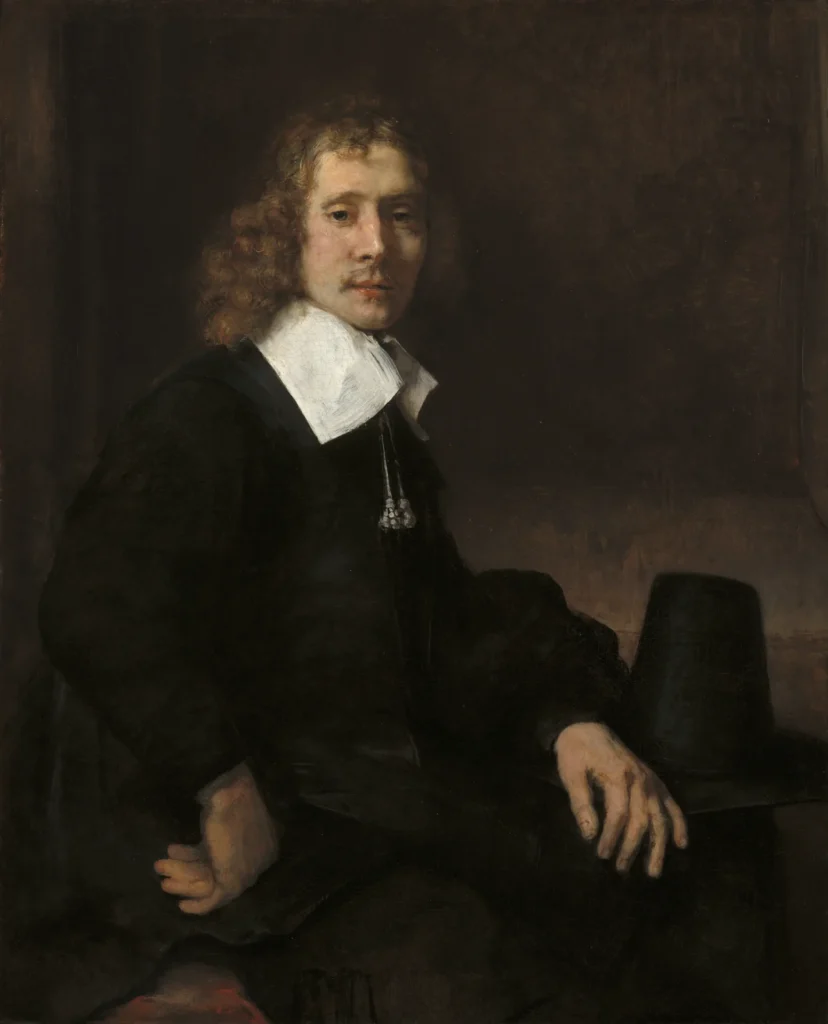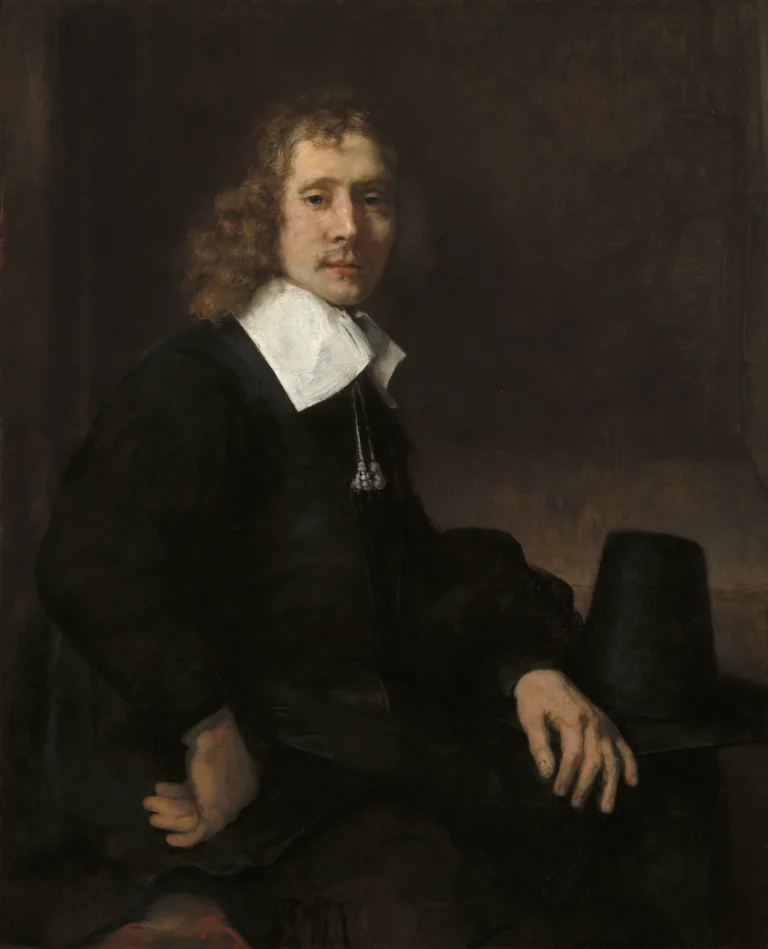A Young Man at a table
This captivating artwork portrays a young man seated confidently at a table, dressed in elegant yet understated attire. The sitter's angular features and relaxed pose suggest a depth of character. Rembrandt's skillful brushwork and use of light enhance the intimate atmosphere, prompting viewers to ponder the identity of the sitter, who might be Govaert Flinck, a fellow artist. The painting, believed to date from around 1660, showcases the celebrated Dutch artist's talent for depicting human emotion.
Around 1660
About the Artwork
"A Young Man Seated at a Table" is a poignant reflection of Rembrandt's later work, where he adeptly captures the complexity of human emotion through his subjects. Despite the ambiguity surrounding the sitter's identity, the painting serves as a testament to Rembrandt's deep understanding of the human spirit. The relaxed, self-assured pose invites speculation about his profession, with the possibility of him being a fellow artist like Govaert Flinck. This connection enriches the viewer's experience, as it draws parallels between the two painters, emphasizing the camaraderie within the art community of the time.
Did You Know
Liked what you see? Add it to your collection.
Enjoyed reading? Share it.
... continued
Subject and Appearance
The painting depicts a stylish young man, although his age is debated. Despite his elegant pose, the sitter's angular features and somewhat heavy eyes suggest he is likely in his early to mid-forties rather than a young man.
Dress and Pose
The sitter is dressed in understated yet elegant attire, including a plain white collar left open at the neck, a black costume, and a hat. His pose, with one arm akimbo and the other resting on the table, conveys self-assurance and a sense of relaxation.
Attribution and Date
The painting is attributed to Rembrandt van Rijn without question. The date of the painting has been subject to interpretation due to the difficulty in deciphering the signature and date. Initially read as "Rembrandt f. 1662," it was later interpreted as "1663," but stylistically, it is now believed to date from around 1660.
Style and Technique
The painting showcases Rembrandt's characteristic brushwork, with smooth strokes and nuanced modulation of forms to capture the play of light on the sitter's face. The use of rapid strokes and wet-on-wet painting techniques is evident, particularly in the hair and the highlights on the forehead.
Condition
The painting has suffered from dense and discolored varnish, which obscures some of its original detail and three-dimensional character. There is also retouching, notably in the mustache, and condition issues with the thinly painted hands.
Possible Identity of the Sitter
The name of the sitter is not known, but there is a suggestion that it might be Govaert Flinck, a painter who studied with Rembrandt and was at the height of his fame when he died in 1660. The resemblance to an engraved portrait of Flinck supports this possibility.
Interpretation
The relaxed and informal pose of the sitter has led to interpretations that he might be depicted as a painter seated before a canvas, similar to Rembrandt's earlier depiction of Jan Asselijn in an etching from about 1647.










